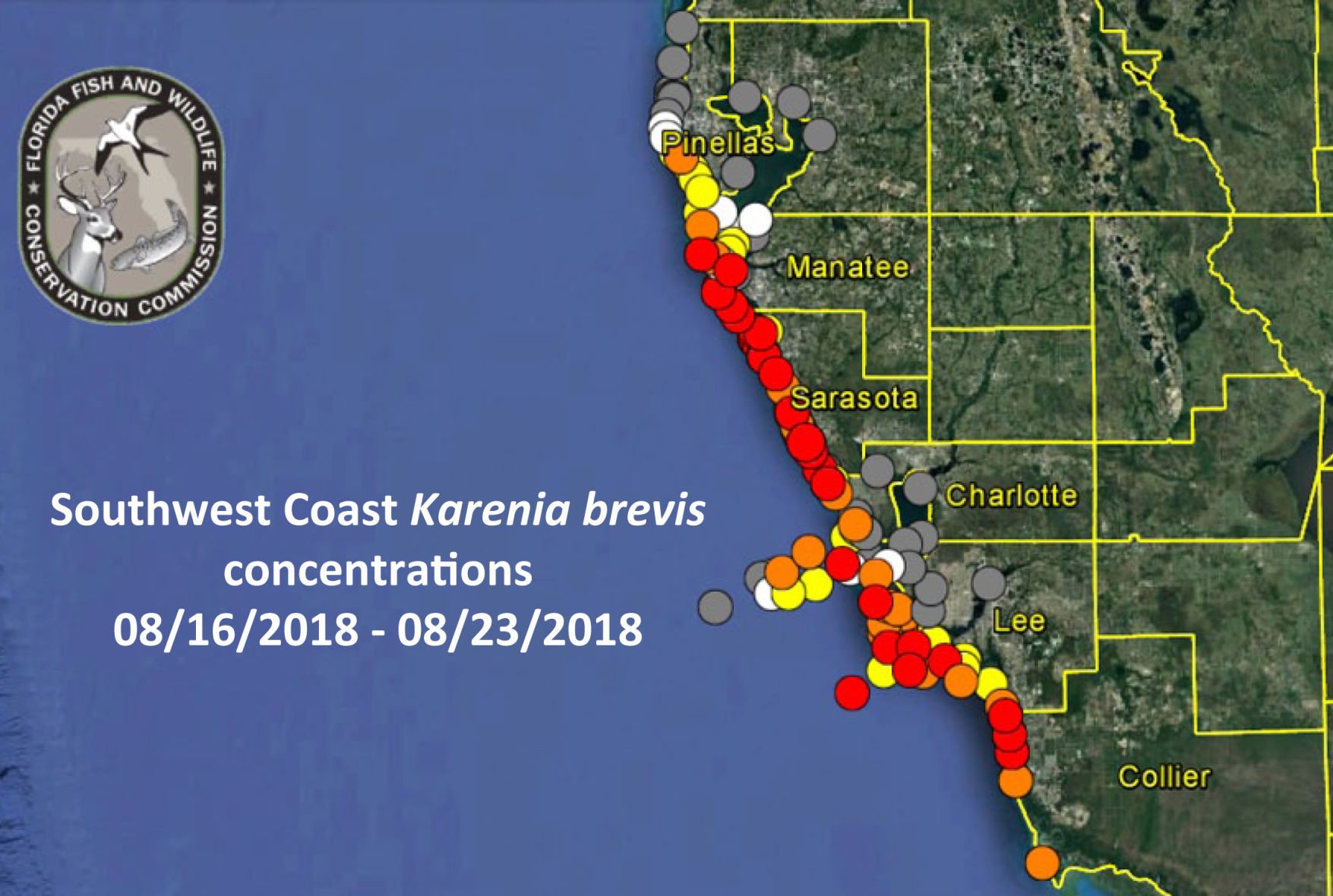

Respiratory irritation was also reported in Pinellas County (Boca Ciega Bay, Pass-a-Grille, Treasure Island Beach), Manatee County (Anna Maria Island Rod & Reel Pier, Anna Maria Beach, Coquina Beach, Longboat Key Beach, Manatee Beach) and Sarasota County (Caspersen Beach, Englewood Beach, Humphries Park, Lido Key Beach, Longboat Key, Manasota Key, Manasota Key Beach, Nokomis Beach, Siesta Key Beach, South Brohard Park, Turtle Beach, Venice Beach, Venice Fishing Pier, and Venice North Jetty Beach).įorecasts by the University of South Florida-Florida Fish and Wildlife Conservation Commission Prediction of Red Tides predict red tide will continue to get worse in the area because of winds from the south blowing the toxins northward. Over the past week, reports of fish kills suspected to be related to red tide were received from Pinellas, Manatee and Sarasota counties. Medium levels are present at Lido Beach, Siesta Beach and Venice Beach. High amounts are being found at Bay Dock in Sarasota Bay, Nokomis Beach and Service Club Park, south of Venice. Heavy concentrations of red tide are now being reported on Clearwater Beach, just in time for spring break. In Manatee County, medium amounts of the toxin are present at Anna Maria Island, Longboat Pass and Palma Sola Bay. Spring breakers may be exposed to another outbreak of red tide, which is being pushed by southerly winds to some of the regions most heavily visited beaches. State environmental officials on Wednesday said low amounts of red tide are now being found along beaches in Redington Shores, Treasure Island and Fort De Soto, as well as in Boca Ciega Bay.

And high concentrations of the toxin are being reported in Treasure Island and Long Bayou. Large concentrations can discolor water red to brown, causing blooms to be called 'red tides. State environmental officials say red tide has drifted as far north as Sand Key, just south of Clearwater Beach. Winds from the south are expected to continue pushing the blooms northward. brevis is a naturally-occurring organism, nutrient enrichment of our coastal waters can make blooms worse and longer-lasting. Red tide is now affecting beaches along the central Pinellas coast. For more information, visit Collier County’s Red Tide Main Page or Collier County Red Tide Frequently Asked Questions (FAQs). Collier County Red Tide updates are available on the Red Tide Hotline at (239) 252-2591. In high enough concentrations, the algae turns water a distinct red color. To report dead fish or red tide symptoms, please call Collier County Pollution Control at (239) 252-2502. The most common red tide organism in Florida is the dinoflagellate Karenia brevis (K. Red tide events have been noted in Florida since the 1800s and most certainly occurred prior to European settlement. Some red tides have even been carried by the Gulf. People with severe or chronic respiratory conditions such as asthma or chronic lung disease are cautioned to avoid areas with active red tide. Florida red tides can be transported around the Gulf of Mexico as coastal waters move with winds and currents. Red tide intensifies:Local beaches to have high respiratory irritation this weekend Florida red tide map: Current status S.

If you experience any eye, nose or throat irritation while in an area with red tide, symptoms should go away if you leave the area. The presence of red tide can affect some people and impact fish and marine wildlife. Red tide is a type of harmful algae bloom (HAB) caused by an increase or “bloom” in the concentration of certain microscopic algae in the water.


 0 kommentar(er)
0 kommentar(er)
